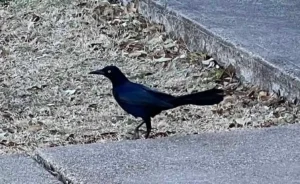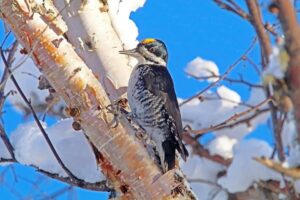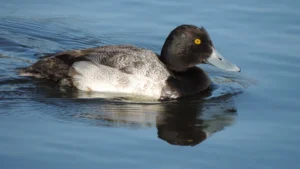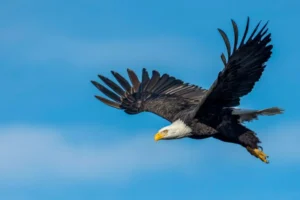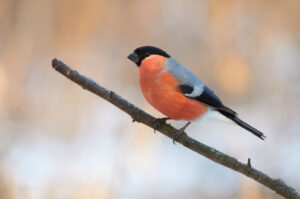Have you ever wondered whether do owls eat bats? These fascinating birds of prey are known for their sharp talons and keen eyesight, but what do they eat? In this article, we will explore the eating habits and diet of owls and answer the question of whether they consume bats.
Owls are nocturnal birds, which means they are most active at night. This influences their food choices, as they tend to hunt prey that is active at night as well. Let’s delve deeper into the diets of these fascinating birds and find out more about their feeding habits.
Key Takeaways:
- Owls are nocturnal birds of prey.
- They tend to hunt prey that is active at night.
- We will explore their diets and eating habits in this article.
- We will answer the question of whether owls eat bats.
Understanding Owl Diets
Owls are fascinating nocturnal birds with a diverse diet that varies across different species. As predators, they play an important role in maintaining balance within ecosystems. Understanding their food preferences is crucial to comprehending their ecological significance.
Their diet mainly consists of small mammals such as mice, voles, shrews, rats, and rabbits, but they also consume insects, birds, fish, reptiles, and amphibians. The type of prey they hunt depends on their size, habitat, and hunting behavior.
They have unique adaptations that make them efficient hunters, including keen eyesight and hearing, silent flight, and powerful talons. These adaptations allow them to capture their prey with ease.
Their nocturnal nature also influences their food choices, as many of their preferred prey items are also active during the night. This means they have a great advantage over diurnal predators who hunt during the day.
Overall, understanding owl diets is essential in appreciating their ecological significance and the vital role they play in maintaining balance within ecosystems.
The Predator-Prey Relationship
As nocturnal birds of prey, owls have a significant impact on the food chain and are known to consume a variety of small animals, including rodents, birds, and insects. While many species of owls primarily hunt on the ground, others are capable of hunting in the air, targeting flying prey such as bats.
While bats make up a small portion of an owl’s diet, some owl species are known to prey on bats more frequently than others. For example, the barn owl, a common species found worldwide, is known for its preference for small mammals, including bats. Other owl species, such as the great horned owl, are more likely to prey on larger animals, such as rabbits and squirrels.
Owl Hunting Behavior
Owls are highly skilled hunters that rely on their keen senses to locate and capture prey. Their hunting behavior is adapted to their nocturnal lifestyle, allowing them to navigate and hunt in the dark.
One of the key features of owl hunting behavior is their silent flight. Owls have specially adapted feathers that reduce noise and turbulence during flight, allowing them to approach prey without being detected. This stealthy approach is particularly effective when hunting small mammals, such as rodents and rabbits.
When hunting, owls typically perch in a high location, such as a tree branch or rock, and scan the area below for prey. Once prey is located, the owl will swoop down and grab it with their sharp talons. Some larger owl species, such as the Great Horned Owl, are even capable of hunting and killing prey as large as a skunk or hare.
Owls are also known for their unique feeding behavior. Unlike many other bird species, which swallow their prey whole, owls use their beaks to tear off chunks of flesh and swallow them in pieces. This allows them to digest their food more efficiently and minimizes the risk of choking.
Overall, owl hunting behavior is a fascinating and unique adaptation that allows these birds to thrive in their nocturnal habitats.
Do Owls Hunt Bats?
Now that we have explored the dietary habits of owls and their food preferences, it’s time to address the question on everyone’s mind: do owls eat bats?
The answer is yes, some species of owls do, in fact, hunt and eat bats. While bats may not be a primary food source for most owl species, they are a common prey item for some, particularly those that inhabit areas with a high bat population.
Various factors contribute to an owl’s decision to hunt bats, including geographical location, seasonal variations, and the availability of other prey items. For example, in areas where insects and small mammals are scarce, owls are more likely to hunt bats in order to supplement their diet.
It’s important to note that while owls are indeed predators of bats, they are also important contributors to maintaining balance within ecosystems. As with any predator-prey relationship, the presence of owls as bat predators helps to regulate bat populations and prevents them from becoming overpopulated.
So, while it may seem surprising at first, the fact that owls hunt and eat bats is just one small piece of the intricate web of predator-prey relationships that exists within our natural world.
The Diet of Different Owl Species
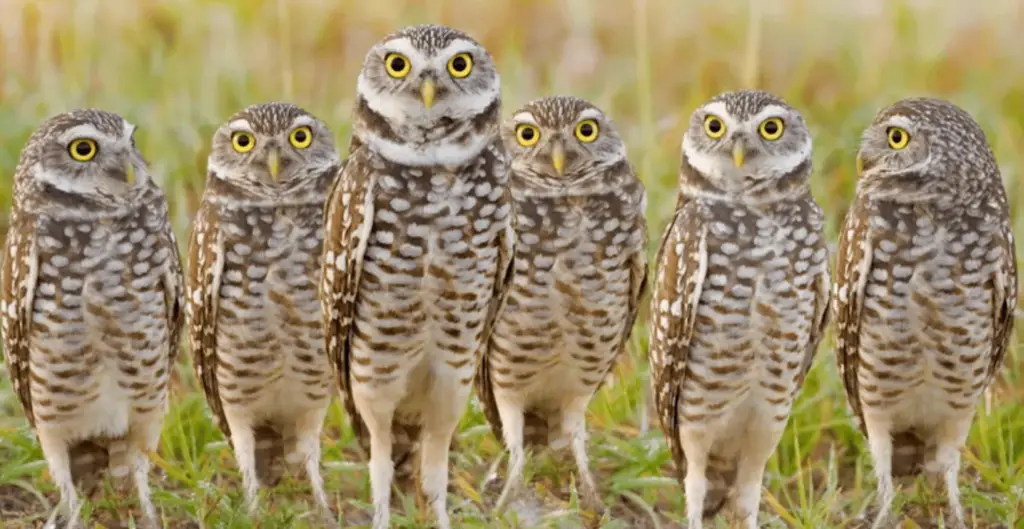
Owls are incredibly diverse creatures, with over 200 different species found across the globe. As a result, their diets can vary greatly depending on their geographical location and the specific adaptations of each species.
While most owls are carnivorous and feed primarily on small mammals such as rodents and rabbits, some species have evolved to specialize in hunting other prey. For example, the snowy owl is known to hunt lemmings, while the elf owl is capable of capturing scorpions.
Additionally, some larger owl species have been known to prey on other birds, including other owl species. For instance, the great horned owl has been observed consuming birds as large as geese and herons, as well as smaller owls such as the western screech owl.
Owl Diets by Location
The location of an owl’s habitat can also significantly impact its diet. For example, in desert regions, owls may rely heavily on reptiles and insects for sustenance, while those in coastal areas may consume more fish and crustaceans.
In the Arctic, where small mammals are less abundant, some owl species have adapted to feed almost exclusively on lemmings, which are more plentiful in the area. This specialization in diet has allowed these owls to thrive in an otherwise unforgiving environment.
Owl Diets by Season
Seasonal changes can also impact the diets of owls. During the breeding season, some owl species may consume more insects and other prey to ensure proper nutrition for their young. In areas where certain prey items are only available seasonally, owls may adjust their diets accordingly.
Overall, the diverse diets of owl species highlight the adaptability and resourcefulness of these nocturnal birds. By consuming a wide range of prey items, they play an essential role in maintaining balance within a variety of ecosystems.
Owl Adaptations for Hunting
Owls are expert hunters, with unique adaptations that make them extremely efficient predators. Their silent flight, acute hearing, and exceptional eyesight are just a few of the adaptations that help them to succeed in their nocturnal hunt.
One of the most notable adaptations of owls is their specialized feathers. Owls have large, soft feathers that allow them to fly silently through the air, making it easier for them to approach their prey unnoticed. Additionally, their wings are structured in a way that allows them to fly with minimal noise.
Another adaptation that makes owls successful hunters is their keen sense of hearing. Owls have asymmetrical ears that allow them to pinpoint the location of their prey with incredible accuracy. This, combined with their ability to fly silently, makes it easier for them to detect prey in the dark.
Lastly, owls have excellent vision, which is essential for hunting. Their large eyes are shaped like tubes, which allows them to focus on their prey and judge distances accurately. Additionally, their eyes are adapted to low light conditions, allowing them to see in the dark.
In summary, owls have a range of specialized adaptations that make them highly effective hunters. Their silent flight, keen hearing, and exceptional eyesight allow them to detect and capture prey with ease, making them a formidable predator in the animal kingdom.
The Diet of Different Owl Species
Owls are a diverse group of birds, with over 200 species worldwide. Each species has its own unique diet preferences, depending on factors such as their size, habitat, and hunting behavior.
For example, the barn owl primarily feeds on small mammals like rodents, while the snowy owl preys on lemmings and other small mammals living in arctic regions. The great horned owl has a broad diet, including rabbits, squirrels, and even skunks, while the tiny elf owl feeds on insects.
Other owl species have more specialized diets. The spectacled owl, found in Central and South America, feeds almost exclusively on large rainforest birds like macaws and toucans. The fishing owl, found in Africa and Asia, feeds on fish caught from rivers and lakes.
Overall, owl diets are highly varied and adapted to their specific environments. Understanding the unique diets of different owl species can provide insights into their ecological roles and behaviors.
Factors Influencing Owl Diets
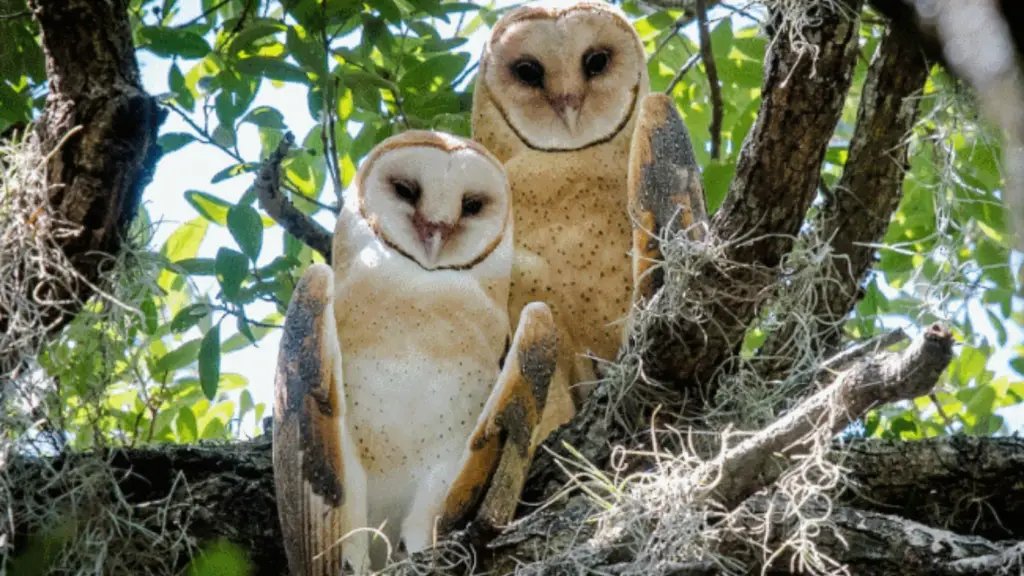
Owls are opportunistic hunters, meaning they will adapt their diets to the food sources available in their environment. Therefore, several factors can influence the composition of an owl’s diet.
Geographical location: The geographic location of an owl’s habitat plays a significant role in determining its food preferences. For instance, owls living in forested areas will feed on small mammals, while those residing in coastal areas will consume more fish and crustaceans.
Seasonal variations: The availability of prey items also varies with the season. Owls will adjust their diet according to the seasonal changes in their environment, such as a shift in prey population or the migration of certain bird species.
Time of day: Since owls are nocturnal, they hunt at night when their prey is most active. Consequently, their diet is primarily composed of nocturnal animals such as rodents, bats, and insects.
Age and size: The size and age of an owl can also affect its food choices. Larger owl species can hunt larger prey, while smaller owl species will rely on smaller prey items such as insects and small mammals.
Therefore, a variety of factors can impact the composition of an owl’s diet, making it a dynamic and adaptable aspect of their behavior.
Do Owls Eat Bats Frequently?
As we’ve established, owls do eat bats, but the frequency at which they consume them varies depending on several factors. Some owl species, such as the barn owl, are known to prey on bats more frequently than others. This is because barn owls are adapted to hunting in open spaces, where bats are more abundant. Other species, such as the great horned owl, have a more varied diet and may consume bats less frequently.
It’s also important to note that the frequency of bat consumption by owls can vary seasonally and geographically. In areas where bats are more prevalent, such as near caves and other roosting sites, owls may consume them more frequently. During breeding season, when owls need to feed their young, they may also increase their consumption of bats.
Overall, while owls do eat bats, they are not their primary prey item and the frequency at which they consume them depends on several factors. Owls play an important role as bat predators within ecosystems, but their diet is varied and diverse.
The Importance of Owls in Ecosystems
Owls play a vital role in maintaining balance within ecosystems. As predators, they help control the populations of their prey, which in turn helps prevent overgrazing and other ecological imbalances. By consuming small mammals and insects, they also help control the spread of diseases among these species.
Additionally, owls are an important indicator species, meaning their presence (or absence) can be used as an indicator of the health of an ecosystem. If owl populations are declining, it may be a sign of a larger problem within the ecosystem, such as habitat loss or pollution.
Moreover, owls are an essential component of the food chain. As top predators, they help regulate populations of other animals, which in turn affects the entire ecosystem. When owl populations are healthy, it indicates a relatively stable and healthy ecosystem.
It is important to recognize the role that owls play in ecosystems and to take steps to protect their populations. This includes preserving their habitats, reducing the use of pesticides and other harmful chemicals, and supporting conservation efforts aimed at protecting owl species.
The Conservation of Owl Species
Owls are an essential part of ecosystems around the world, and their unique diets play a crucial role in maintaining balance within these environments. However, habitat loss, climate change, and human activities like agriculture and hunting are threatening many owl species.
To protect these beautiful birds, conservation efforts are underway around the world. These efforts focus on preserving owl habitats, reducing human impact on their environments, and educating the public about the importance of owl species to our ecosystems.
In addition to habitat conservation, some organizations are working to breed and release owls into the wild in an effort to rebuild populations that have been decimated by human activity. These programs have been successful in restoring populations of some owl species in certain areas.
Another way to protect owl species is to support sustainable farming practices that preserve natural habitats and reduce pesticide use. This helps to ensure that owls and other birds of prey have access to a healthy food supply and can thrive in their natural environment.
Overall, the conservation of owl species is essential to maintaining healthy ecosystems and preserving the diversity of life on our planet. By supporting conservation efforts and promoting sustainable practices, we can help protect these beautiful birds for generations to come.
Owls and Bats Coexisting
Despite the predator-prey relationship between owls and bats, these two creatures can coexist within the same ecosystem. In fact, both species play important roles in maintaining balance within their respective habitats.
Owls are known for being important predators, but they also serve as indicators of ecosystem health. Their presence or absence can tell us a lot about the overall condition of the environment they inhabit. By maintaining a healthy population of owls, we can ensure that their ecosystems remain in good shape.
As for bats, they are important pollinators and seed dispersers, contributing to the ecological diversity of their habitats. Without bats, many plant species would be at risk, leading to a cascade of negative effects on the ecosystems in which they reside.
One way in which owls and bats can coexist is by occupying different niches within an ecosystem. For example, some species of bats are active during the day, while owls are strictly nocturnal. This means that they are not direct competitors for food or other resources.
Additionally, some owl species prefer to hunt small mammals or insects rather than bats, allowing bats to thrive without fear of owl predation.
Overall, the coexistence of owls and bats is evidence of the complexity and diversity of natural ecosystems. By understanding the roles that each species plays and how they interact with one another, we can work to protect and preserve these important creatures and their habitats.
Conclusion
In conclusion, while there are some owl species that do occasionally eat bats, it is not a common occurrence. Owls have diverse diets, with food preferences varying by species and geographical location.
Understanding owl diets and hunting behavior can provide insights into their role within ecosystems, particularly as predators within the food chain. Conservation efforts aimed at protecting owl species can help preserve their unique diets and maintain ecological balance.
While owls and bats may have a predator-prey relationship, they are able to coexist within ecosystems. It is important to recognize the significance of all species within these systems and work towards their preservation.
FAQs: Do Owls Eat Bats?
Q: Do owls eat bats?
A: Yes, owls do eat bats. While not all owls eat bats, many species include bats in their diet.
Q: What do owls typically feed on?
A: Owls feed on a variety of prey, including small mammals, birds, insects, and reptiles.
Q: Are owls nocturnal?
A: Yes, owls are primarily nocturnal birds, meaning they are most active during the night.
Q: How do owls hunt?
A: Owls are efficient hunters that use their sharp talons and excellent hearing to locate and capture their prey.
Q: What factors influence owl diets?
A: Owl diets can be influenced by geographical location, seasonal variations, and the availability of prey species.
Q: Are owls important in ecosystems?
A: Yes, owls play a crucial role in maintaining balance within ecosystems as predators that control populations of prey species.
Q: Why is conservation important for owl species?
A: Conservation efforts are necessary to protect owl species and preserve their unique diets, as they are essential components of ecosystems.
Q: How do owls and bats coexist?
A: Despite being predator and prey, owls and bats coexist within ecosystems, each fulfilling their roles in the food chain.


